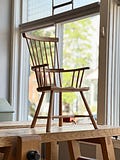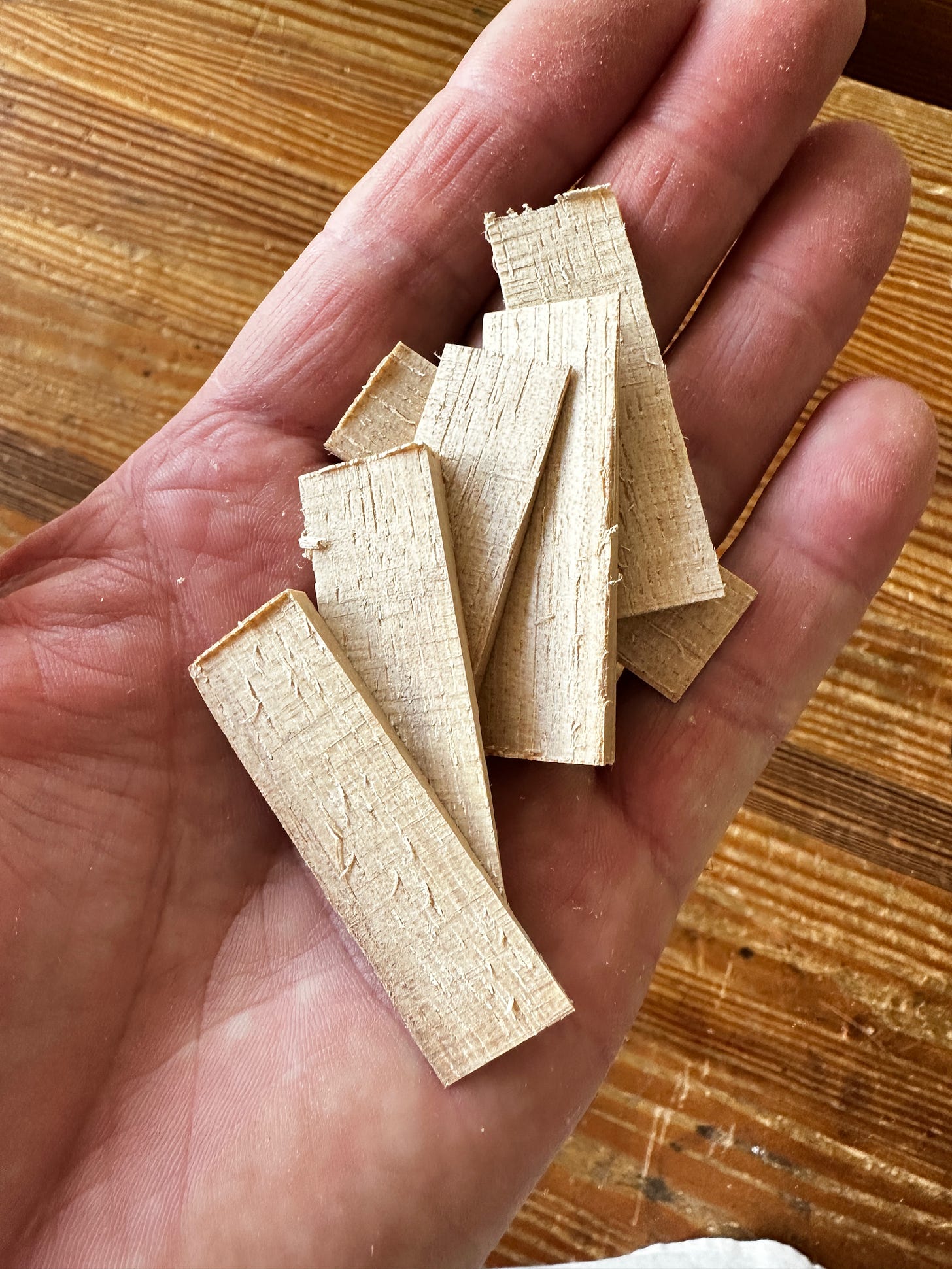I often think of my chairs as the offspring of both the American continent and the people who now inhabit it, from its first people to the people who arrived here just yesterday.
American chairs – no matter what form of chair we’re talking about – are shaped by our woods. And that wood is insanely straight (except for our city trees and field trees, which grow into wild shapes because of their unusual environments). We don’t have the cranky bent trees of the Welsh, Scottish and Norwegian coasts. So, our American stick chairs tend to be straight and tall – like our trees.
Welsh chairmaker Chris Williams always marvels at the dead-straight stock we get here. When I visit Wales, I always marvel at the bent sticks that become his arms and combs.
I’m constantly experimenting with different American species with my chairs. We have an embarrassing number of species to choose from in the Americas. Some of our bushes and ornamental trees are even big enough to be used in chairmaking.
Below are some notes on how I’ve started using a lot more American sycamore, a tree that most woodworkers ignore, in my chairmaking. If you make stick chairs, it’s worth a look.
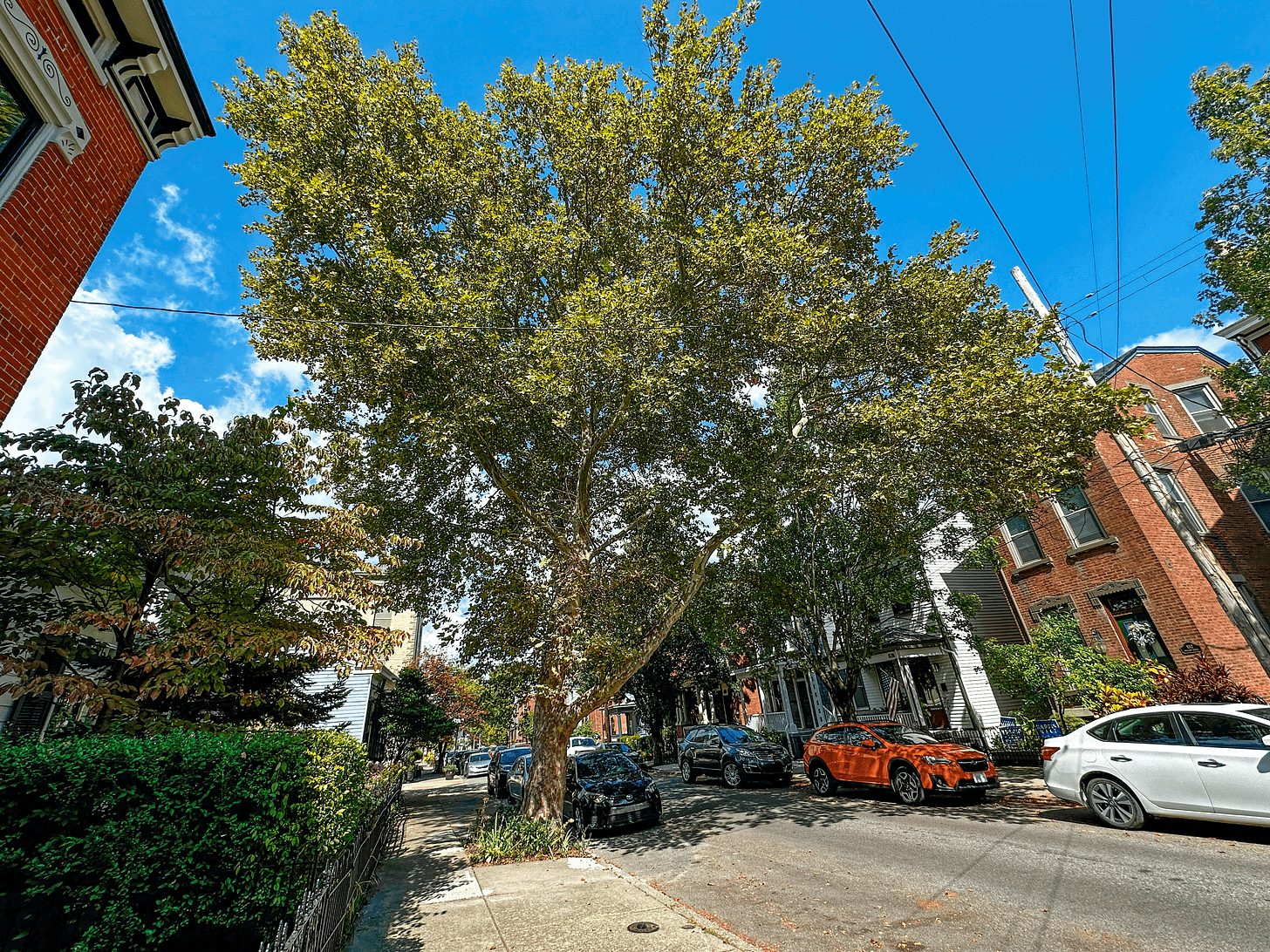
American sycamore (Platanus occidentalis), is considered mostly a junk tree. In fact, I never saw it for sale in a commercial lumberyard until the early 2000s.
Let’s look at its Timber profile and see why so many people swipe left on this species.
Sycamore is unstable and warps quite a bit while drying. And when it’s flat-sawn, it can shrink a lot during the initial year of drying (7/64" in a 12"-wide board).
It’s not a pretty wood, though it has its fans. The wood ranges from bone white to reddish-brown to an almost dark grey. When quartersawn, the ray flake is almost too exuberant. It’s a heavy wood – about the same weight as red oak, but it’s not particularly strong (red oak is more than 40 percent stronger). The U.S. Forest Products Laboratory says its strength is similar to black walnut and tulip poplar. To make thing worse, sycamore also rots easily, and bugs love to eat it.
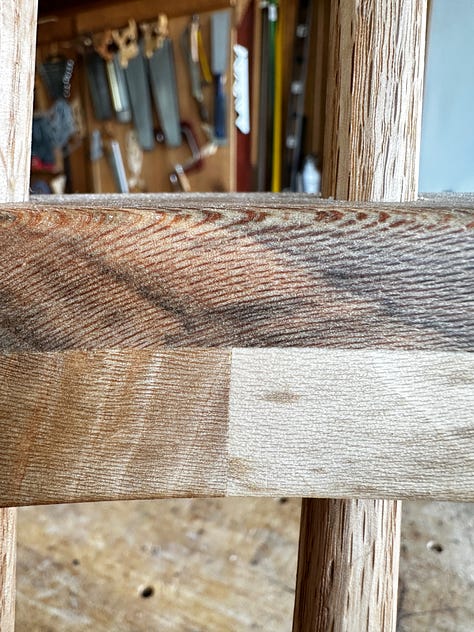
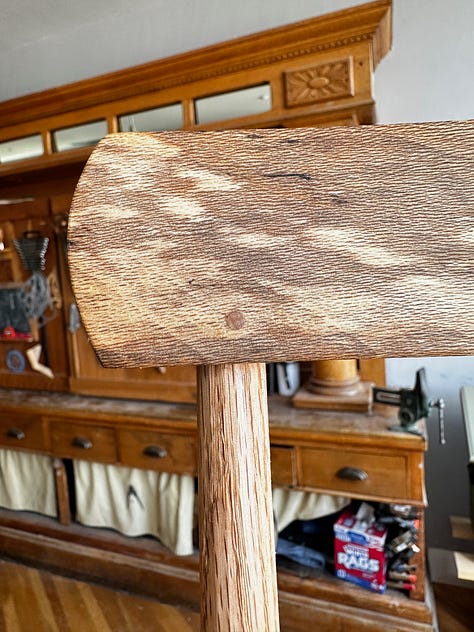
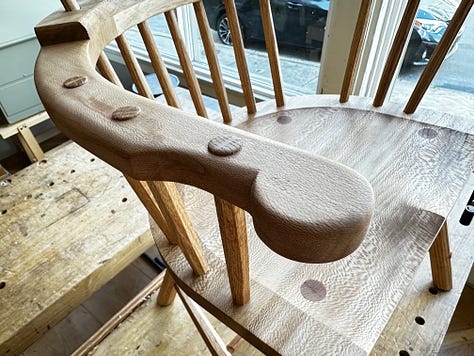
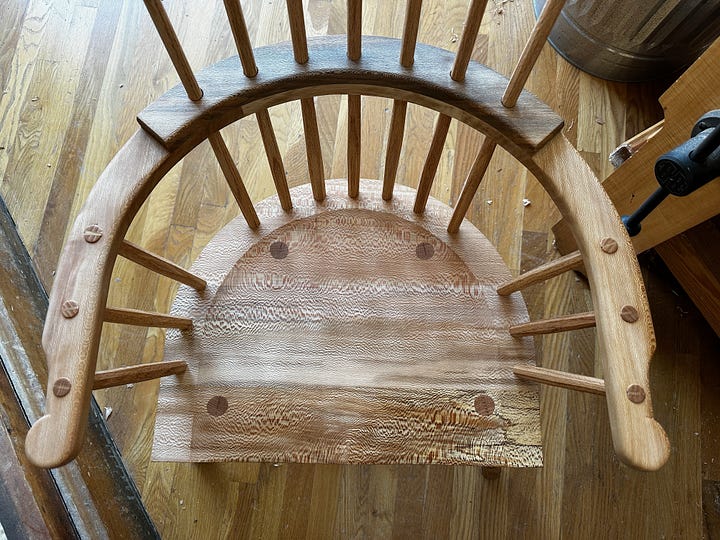
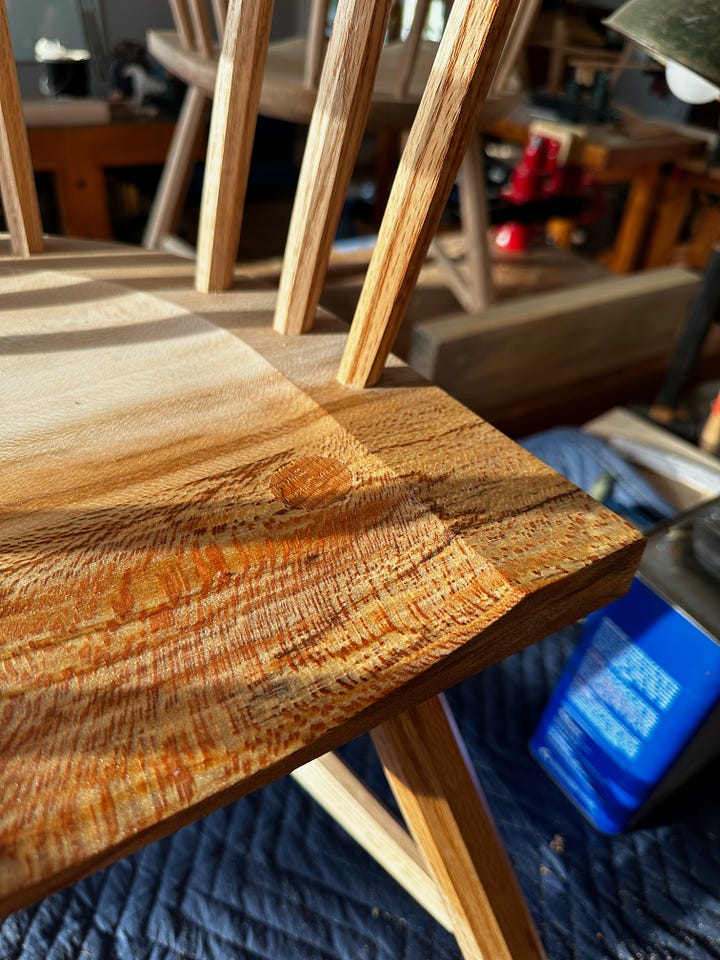
So why are we even talking about this garbage tree?
It’s cheap, it comes in incredible widths and its grain is beautifully interlocked. Oh, and it carves pretty well.
During the last 20 years, I’ve used American sycamore quite a bit for the seats, arms and combs of my chairs. Last week, I used sycamore in a classroom environment for the first time, and it performed quite well. We built eight chairs during the class, and we had only one disaster: one of the arms snapped during a freak accident on the spindle sander that I still don’t fully understand.
When we make chairs with oak seats, we always get a few splits (minor and otherwise). And oak arms have to be treated like nervous ceramic infants during assembly.
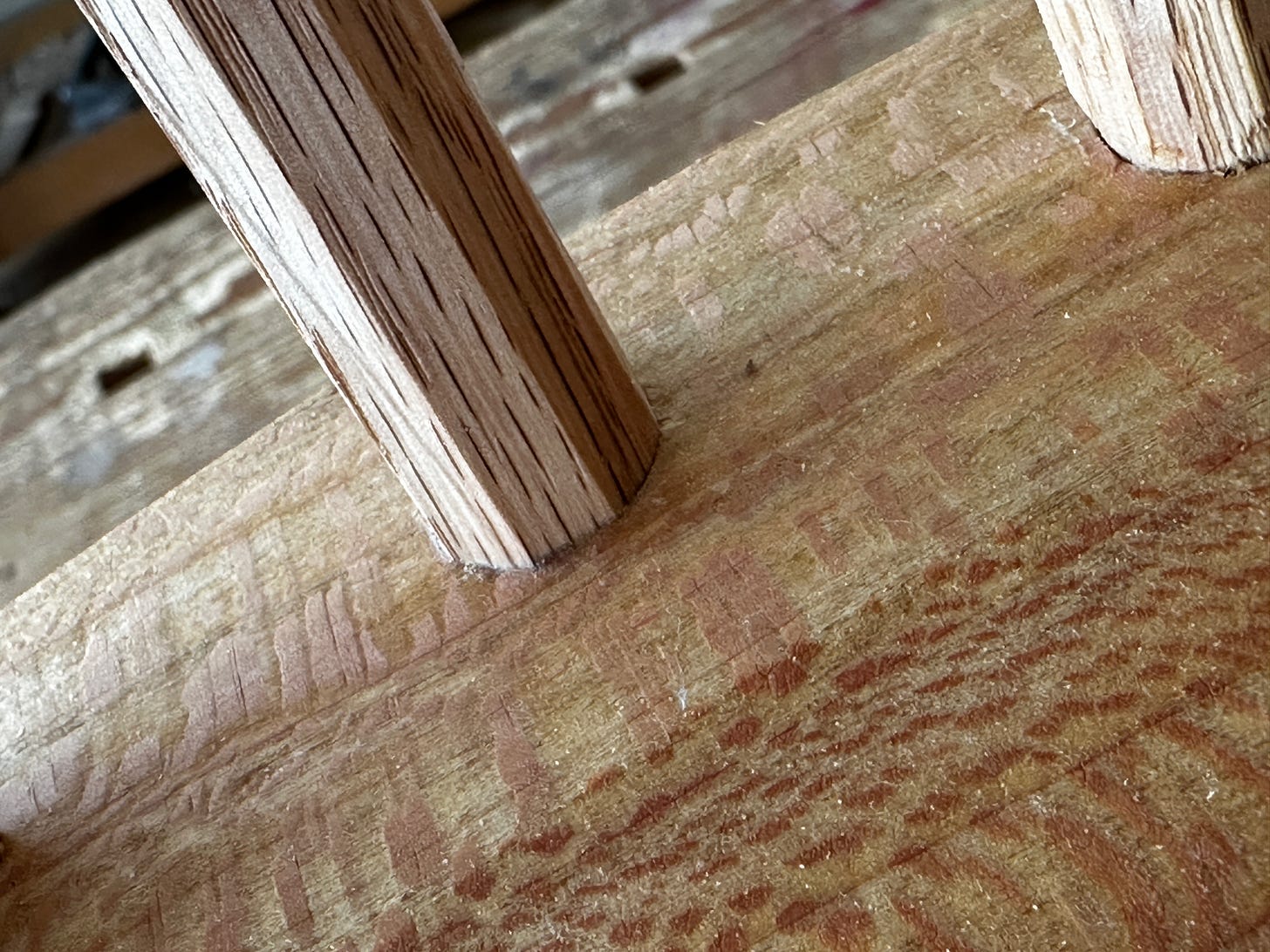
Sycamore, not so much. While assembling the chairs, we drove the legs and sticks into the seat like we were sinking railroad spikes. I was able to seat my sticks into the seat past the tenons’ shoulders and into the faceted section of the stick. The sycamore absorbed the blows easily.
During saddling, most students got on well with the sycamore. My seat was the worst because of a patch of odd grain at the front of the seat. Red elm and poplar are easier to saddle, but the sycamore took crisp details from the tools.
Most of all, it was easy to source one-board seats for the students. Sycamore is one of the girthiest trees in the United States. And if the heartwood doesn’t rot out, you can usually find boards that are 16" to 20" wide without too much problem.1
When I first started buying sycamore, Frank Miller Lumber was selling it for about $1 a board foot. Nowadays, I pay about $4 to $5 per board foot. I’ve air-dried a bunch of it in my career, and I have to say I prefer the kiln-dried stuff. The air-dried stuff seems to warp and split more, even under ideal drying conditions.
I think it’s going to become the standard wood in our classes for seats, arms and combs. So if you have been looking for a good wood for your chairs, consider American sycamore.2
The ‘Sticky’ Parts of the Chair
For years, I’ve used red oak (both Northern and Southern varieties) for the sticks, stretchers and legs of my chairs. Red oak is so common in the United States that you can buy it at most home centers.
It grows straight and is more than strong enough for stick chairs. I like it because red oak is much cheaper than white oak (red oak is about $5 a board foot) and is easier for students to work than white oak.
Most people think red oak is ugly and gives off a 1980s kitchen vibe. I think that attitude is a reaction to the flatsawn boards, which have a distinct (some would say ugly) cathedral pattern.
However, for chairs, red oak’s distinct grain is muted by the fact that the sticks, stretchers and legs are all narrow. Not much grain shows. And you can rotate the pieces in your chair to show the radial (quartersawn) face, which is quite nice in straight stock.
The Wedges
This year, I have managed to get enough hickory (Carya ovata) to start using it in chairs. I love it for legs, sticks and stretchers. But where it especially shines is when used for wedges. The stuff can be driven like an iron nail, and it will close gaps around through-tenons that oak will not (this is because you can drive the hickory deeper than oak).
For Paid Subscribers Only: Anthe & Exeter Hammer Update
Keep reading with a 7-day free trial
Subscribe to The American Peasant to keep reading this post and get 7 days of free access to the full post archives.

